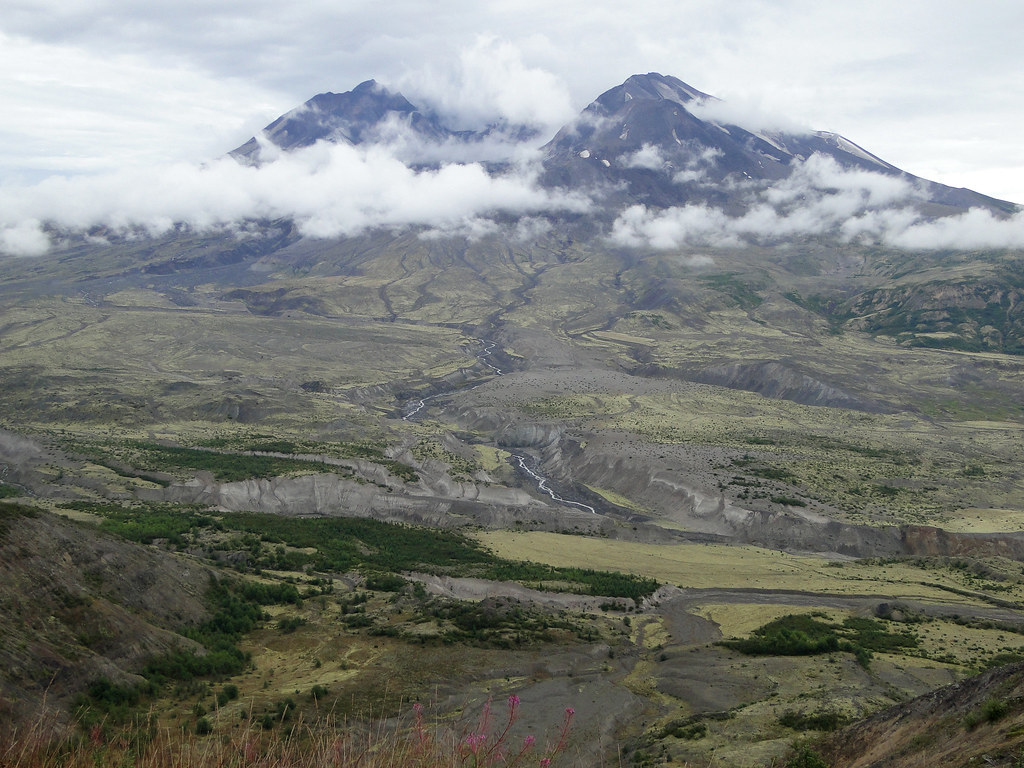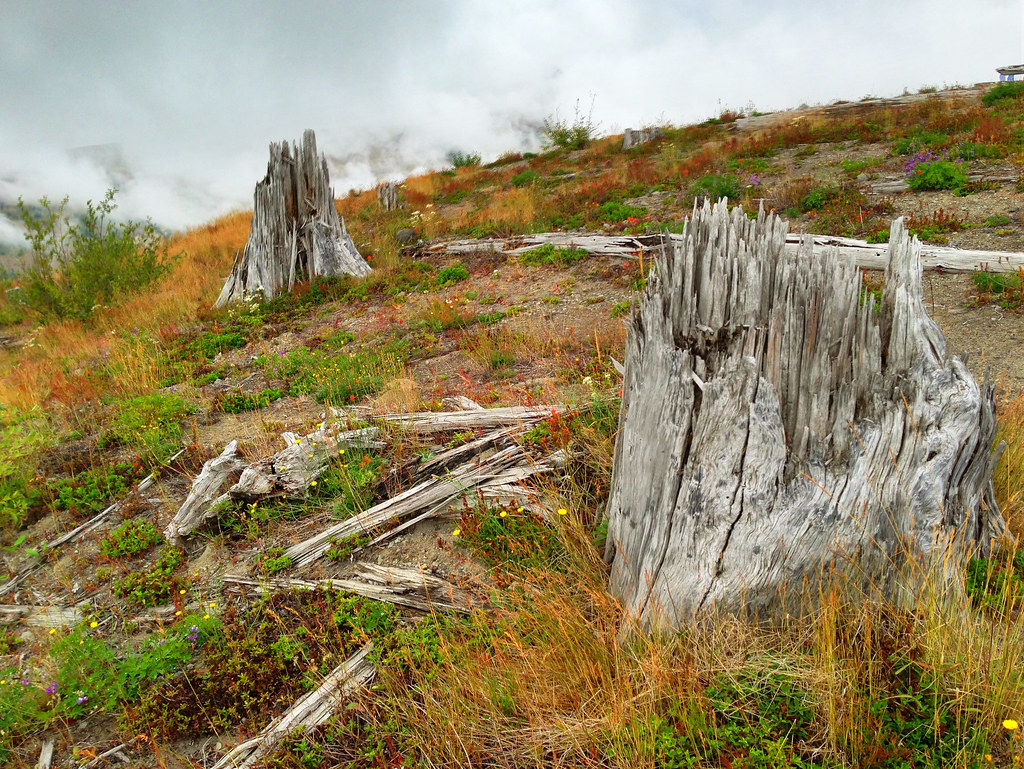You are using an out of date browser. It may not display this or other websites correctly.
You should upgrade or use an alternative browser.
You should upgrade or use an alternative browser.
Aerial views and story of the Mt St Helens eruption
- Thread starter Peakbagr
- Start date

Help Support vftt.org:
This site may earn a commission from merchant affiliate
links, including eBay, Amazon, and others.
marnof
New member
What a hair-raising ride that must have been. I once took a flight with my family in a four-seater, single engine plane around the high Adirondack peaks--that was thrill enough for me.
I visited Mt. St. Helens last August and was amazed at the scope of the devastation. As the article describes, basically the north side of the mountaintop was obliterated, leaving a crater exposed on one side. There were too many clouds at the time to see well into the crater, but there is a smoldering cone rising slowly in the center.
 DSC03906 by cubist11, on Flickr
DSC03906 by cubist11, on Flickr
I was able to hear an elk bugling down in the valley when I took that shot.
Walking around the area, it was easy to see the destruction that was let loose that day.
 IMG_1179 by cubist11, on Flickr
IMG_1179 by cubist11, on Flickr
I visited Mt. St. Helens last August and was amazed at the scope of the devastation. As the article describes, basically the north side of the mountaintop was obliterated, leaving a crater exposed on one side. There were too many clouds at the time to see well into the crater, but there is a smoldering cone rising slowly in the center.
 DSC03906 by cubist11, on Flickr
DSC03906 by cubist11, on FlickrI was able to hear an elk bugling down in the valley when I took that shot.
Walking around the area, it was easy to see the destruction that was let loose that day.
 IMG_1179 by cubist11, on Flickr
IMG_1179 by cubist11, on FlickrChip
Well-known member
In the Visitor Center/Museum there is a great picture of a climber or 2 (from behind) on Rainier who have stopped to watch Mt St Helens.
Now that I mention it, I can't remember if the scene was during the eruption, just before or after.
Does anyone know if Rainier was open during the eruption ?
Knowing what happened, it's a little unsettling being on Rainier, smelling sulfur and hanging out in steam vent caves.
Now that I mention it, I can't remember if the scene was during the eruption, just before or after.
Does anyone know if Rainier was open during the eruption ?
Knowing what happened, it's a little unsettling being on Rainier, smelling sulfur and hanging out in steam vent caves.
Framerman
Member
In the Visitor Center/Museum there is a great picture of a climber or 2 (from behind) on Rainier who have stopped to watch Mt St Helens.
Now that I mention it, I can't remember if the scene was during the eruption, just before or after.
Does anyone know if Rainier was open during the eruption ?
Knowing what happened, it's a little unsettling being on Rainier, smelling sulfur and hanging out in steam vent caves.
Not sure if it was at the time. Not sure why I have the date memorized for St Helens (May 18, 1980), I was in Maine when it happened. Wife and I moved to Seattle for 10 years and visited Rainier, but also went to the Omni Dome in Seattle and watched the video of the eruption. I couldn't imagine what that was like to watch it in person. The images from National Geographic are still etched in my mind. The one hiker who fell backwards from the blast (possibly just from being awestruck), and the sheer amount of trees laying like toothpicks. Certainly an incredible part of history, one I don't think I would like to see again. They say Yellowstone is a gigantic volcano...that would not be good.
Chip
Well-known member
They say Yellowstone is a gigantic volcano...that would not be good.
yeah, a giant caldera. we are mostly all eh-screw-ed if that goes. we have a friend that works in yellowstone.
we told him to leave when the animals do.
Last edited:
marnof
New member
I was living in southern Idaho when St. Helens erupted. I was having lots of fun spelunking lava tube caves around that time. Yellowstone is said to have potentially 10,000 times the destructive force, likely bringing a few years of winter after eruption. Eruptions are on a 600-800K yr cycle and we're at 640K currently.
When they reopened MSH to hikers a few years after the eruption, they allowed up to 100 people a day, though there were far fewer. It was a perfectly clear day and we hiked to the rim and to the high point. The lava dome was small and smoking and it sounded like we were hiking in a rainstorm from the sound of pebbles, rocks and boulders falling into the crater. Spectacular day.
Since then, I've seen photos of the lava dome and it's grown much larger. At the rate it's growing, it will fill the crater in a heartbeat in geological time.
Since then, I've seen photos of the lava dome and it's grown much larger. At the rate it's growing, it will fill the crater in a heartbeat in geological time.
Similar threads
- Replies
- 0
- Views
- 457
- Replies
- 49
- Views
- 3K
- Replies
- 6
- Views
- 931